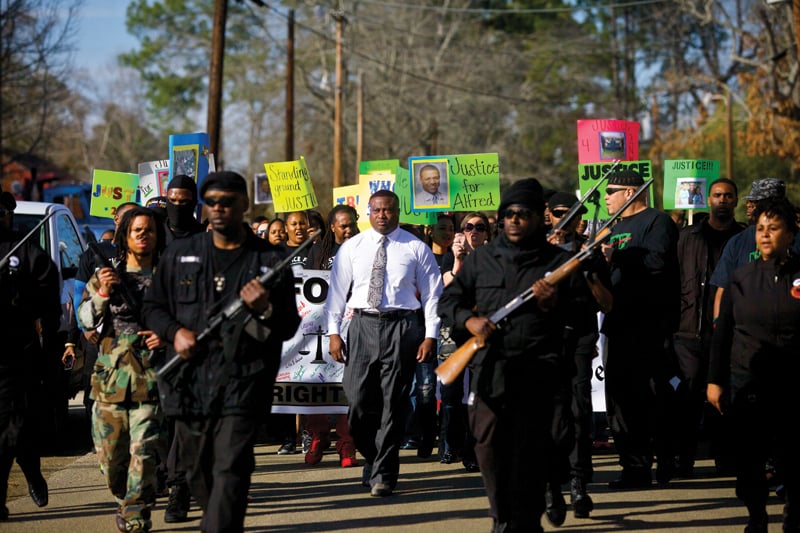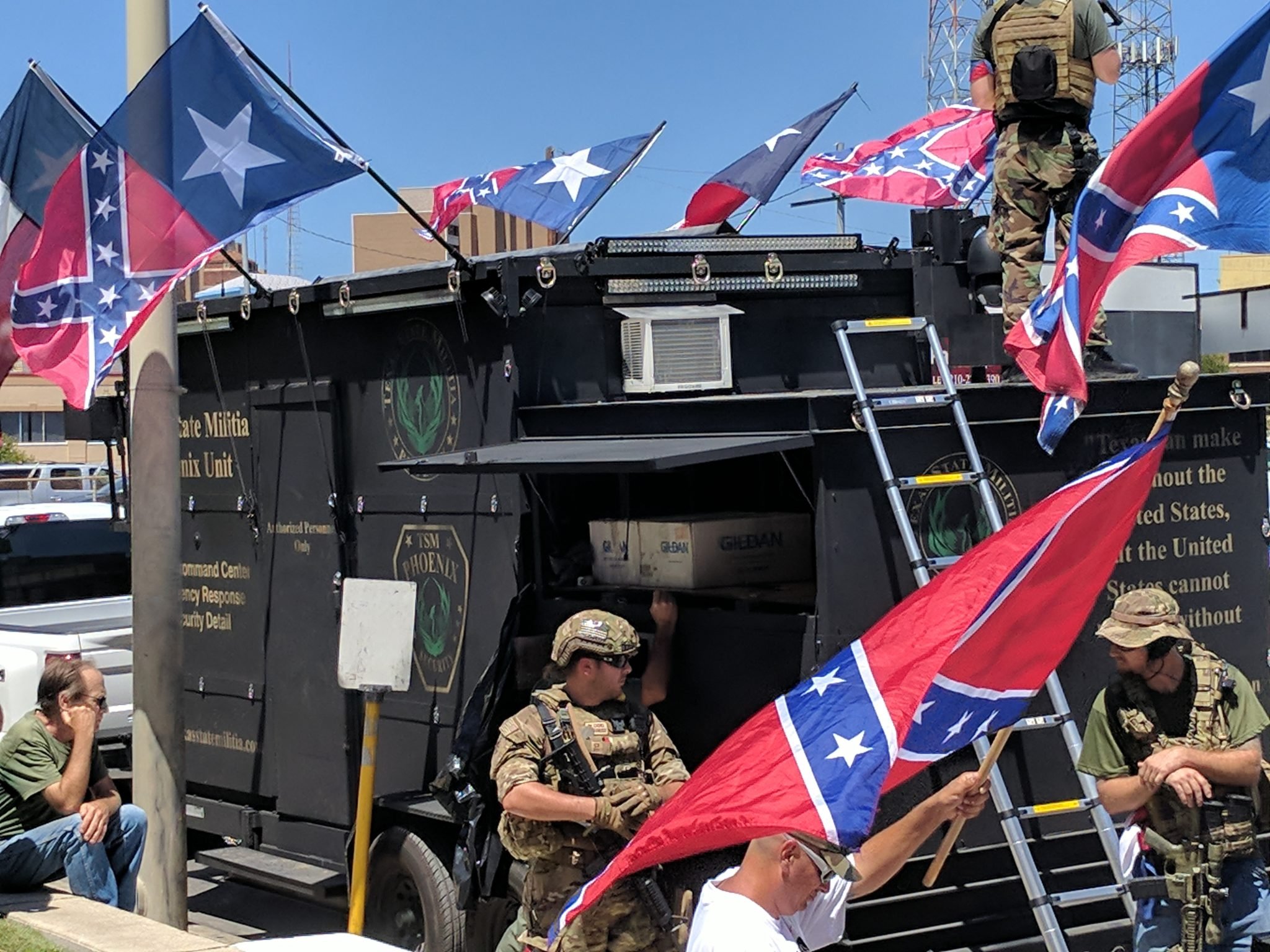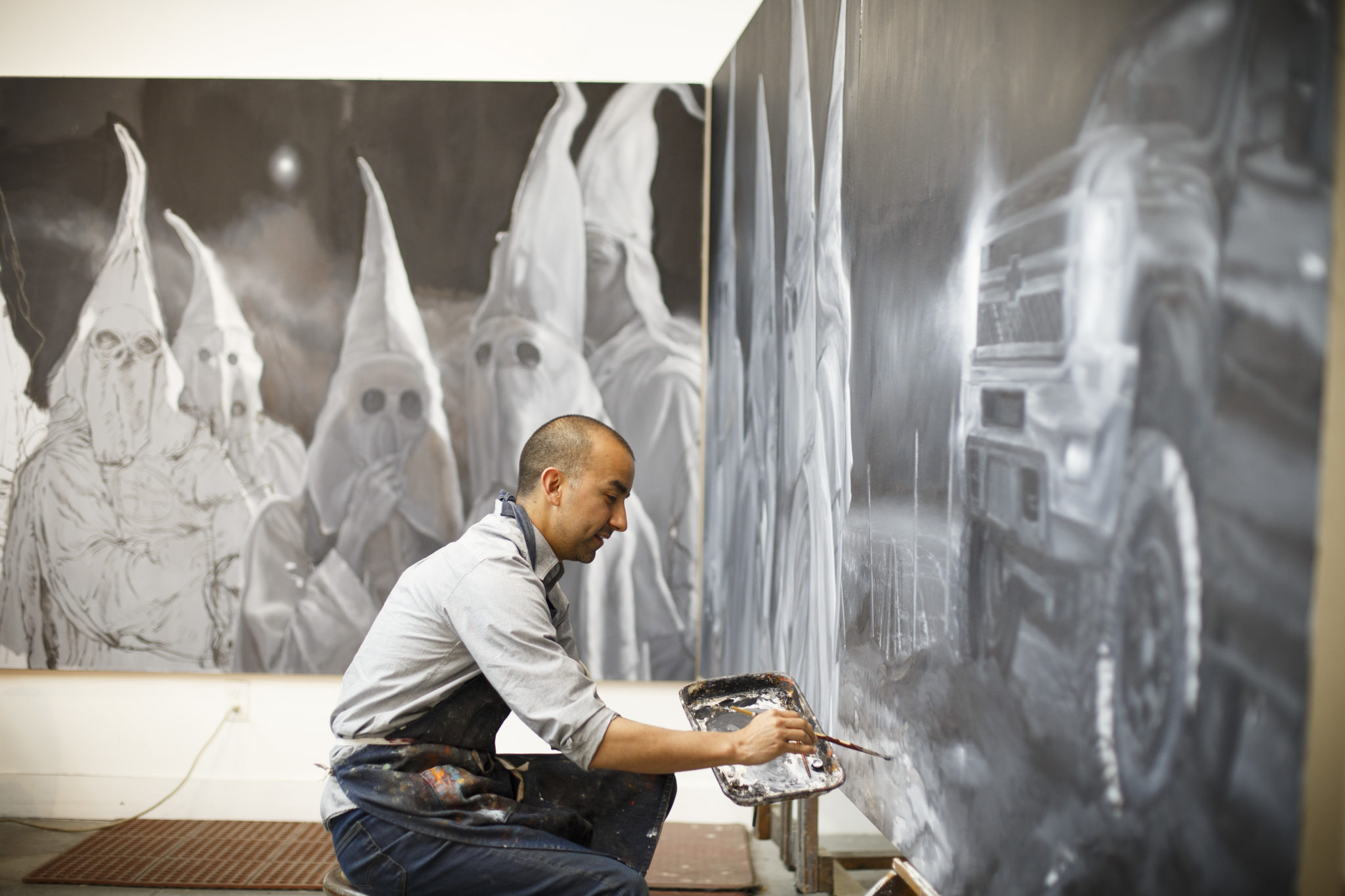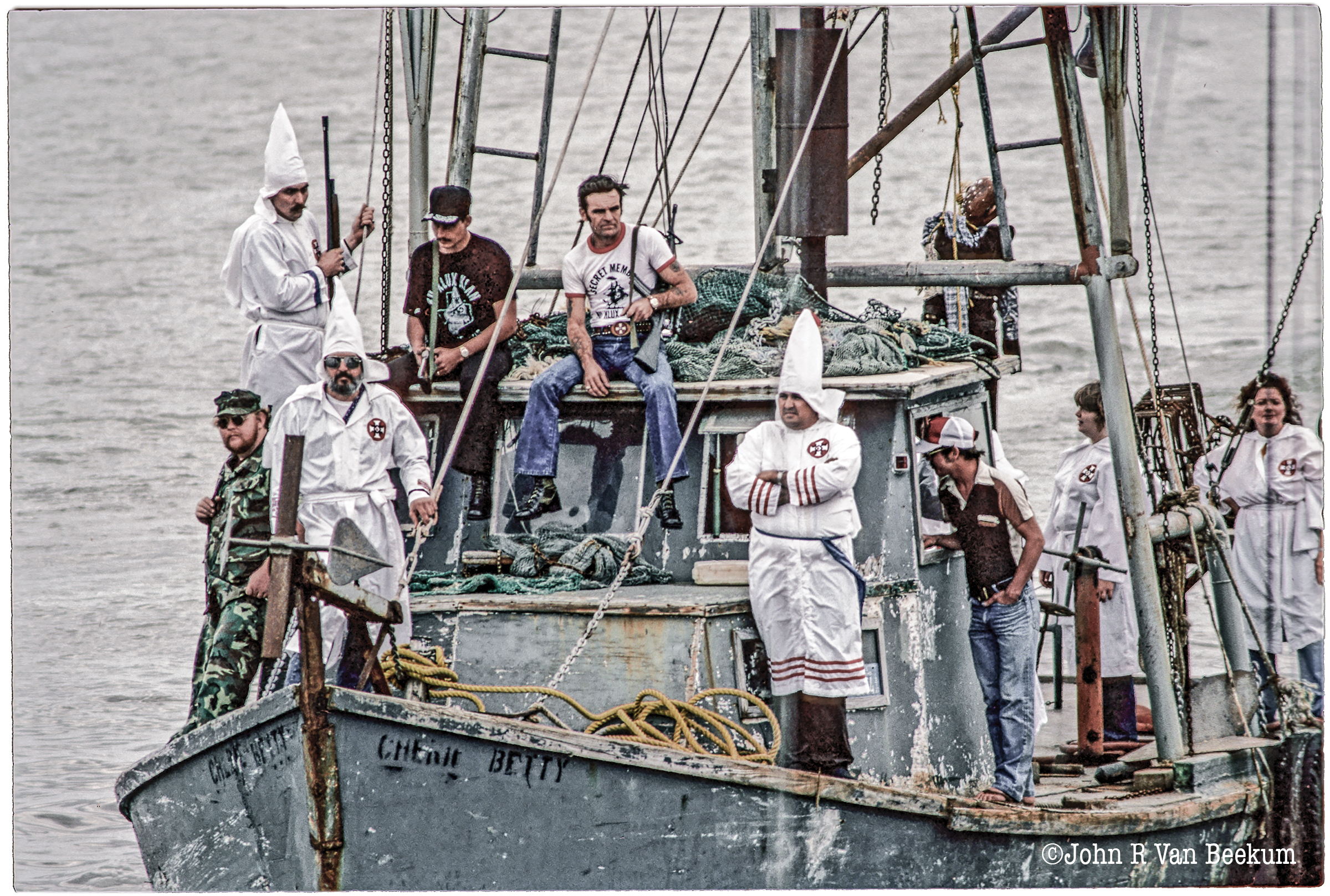
‘Seadrift’ Dredges Up a Little-Known—and Deeply Disturbing—Texas Story
An electrifying new documentary captures a forgotten conflict in the sleepy coastal community of Seadrift.

A version of this story ran in the July / August 2019 issue.
Above: As tensions rose between white and Vietnamese fishermen on the Texas Gulf Coast, the Ku Klux Klan waged an intimidation campaign, hosting paramilitary camps and burning boats. In this 1981 photo, an effigy hangs from a rope behind the ship's cabin.
The new documentary Seadrift opens with a tranquil shot of the bay in the tiny Gulf Coast fishing town that lends the film its title. Frogs jump and a heron preens its feathers as the last of the day’s light falls over calm waters. A resident proudly attests that this sleepy coastal community an hour northeast of Corpus Christi has neither a stoplight nor a fast-food franchise. But then the action jumps to 1979, with a montage of TV news clips that break the peace. “I don’t like them,” a woman snaps at the camera. “They should go back where they come from.” Cut to a 20-something guy in a baseball cap. “Somebody’s gonna take care of those Vietnamese,” he says. “Take care of them?” an interviewer prompts. He doesn’t hesitate: “Kill ’em.”
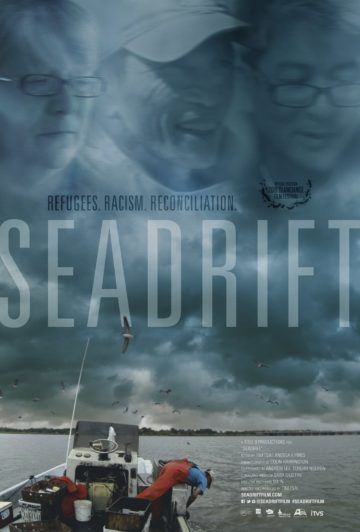
Before this electrifying, long-overdue film ends, one man is dead, hundreds are scared for their lives and heavily armed Klansmen patrol the bay, burning boats and urging white townspeople to “take back our country.” Forty years later, it’s still not entirely clear how things got that bad. But Seadrift, which was directed by Tim Tsai and screened at festivals in Dallas, Austin and Houston this summer, portrays a community deeply scarred by racism and fear of change. This story is one of the wildest and most disturbing in state history, but because it centers on the plight of refugees in a rural community, most Texans have never heard of it.
In 1976, about 150 Vietnamese refugees arrived in Seadrift, invited by the owner of a crab processing plant to pick meat from shells for $40 a day. Many saved up, bought their own boats and made a slightly better living fishing for crab and shrimp. Thế Neguyen laughs while explaining that he never wanted this job — he’s prone to seasickness. Plus, boats called up traumatic memories. Nguyen and his family spent 10 days fleeing Vietnam on an overcrowded boat, growing weak when they ran out of food. His mother had to stay behind, and Nguyen gets teary when he recalls, “The day we leave, she lay in hammock and say, ‘I pray for you.’” According to the United Nations Refugee Agency, as many as 400,000 Vietnamese “boat people” died at sea.
Those who survived didn’t exactly get a warm welcome. Vietnamese-caught fish sold for 50 cents a pound, while whites got double that. Fishermen in Seadrift had long followed an unwritten code: Don’t put your traps close to someone else’s. Stop fishing 30 minutes before sunset. No one told the Vietnamese these rules, and when they broke them, payback was swift: stolen traps, racial slurs, threats. Things really heated up when Sau Van allegedly put his traps near those of Billy Joe Aplin. A confrontation on the water led to another on land, and on August 3, 1979, Van shot Aplin dead. Charged with murder, Van said he’d only been defending himself; he was acquitted. That night, Aplin’s vengeful relatives showed up at another white fisherman’s home with, as the latter recalls in the film, “a five-gallon can of gas and a double-barrel shotgun.”
This story is one of the wildest and most disturbing in state history, but because it centers on the plight of refugees in a rural community, most Texans have never heard of it.
Some called for the refugees to be sent away, and soon KKK Grand Dragon Louis Beam Jr. came to town. Van and a few others fled the state as tensions rose. One shocking scene shows footage from a KKK paramilitary training camp held in response to the shooting, in which men scream “White power!” before heaping their plates with burgers as though they’re at a picnic. Residents considered the Klan’s point of view at a town-hall meeting, treating the KKK more like the Lions Club than a violent hate group.
One of the filmmakers’ best choices is to eschew voiceover narration, graphics, text and “experts.” The story is told entirely by people who were there, and they are riveting. Beth Aplin-Martin, Billy Joe’s daughter, watched as a little girl on his boat while the men fought. She’s still angry at Van and the other Vietnamese fishermen, but she acknowledges — as she holds the bloodstained shirt her father died in — that “[Van] didn’t want this to happen, either,” and says she’s trying to forgive him. Another white man, a decorated Vietnam veteran, finally lets go of his hatred: “These are not the people we were fighting, these are the people we were fighting for. It took me a long time to realize that.”
Finally, the film returns to the present with a happy scene at a party for Tết, the Vietnamese new year. White and Vietnamese folks mingle while setting off fireworks, drinking Dr Pepper and sharing a hot pot feast. We see Nguyen, who returned to Seadrift in 1981 after having fled to Baltimore, chatting easily with customers at his dockside bait shop. It seems everyone’s moved on, but resentment still simmers. In another scene, two of the white fishermen complain about the advantages they believe refugees received: “The government gave them money to buy their boats, put them on welfare and gave ’em food stamps … Nobody’s done that for me.” That’s the same anti-immigrant, privilege-blind sentiment that got Trump elected, and it clearly remains alive and well in Seadrift and across the country.
READ MORE:
- In ‘The Second Coming of the KKK,’ a Timely Lesson in the History of American Hate: Historian Linda Gordon isn’t shy about connecting the dots between the Ku Klux Klan of the 1920s and the resurgence of hate groups today.
- Where the Bodies are Buried: In 1910, East Texas saw one of America’s deadliest post-Reconstruction racial purges. One survivor’s descendants have waged an uphill battle for generations to unearth that violent past.
- ‘The River and The Wall’ is a Visually Stunning Borderland Adventure: The film strives to step beyond the sensationalist rhetoric and show America what its southern boundary actually looks, sounds and feels like.
